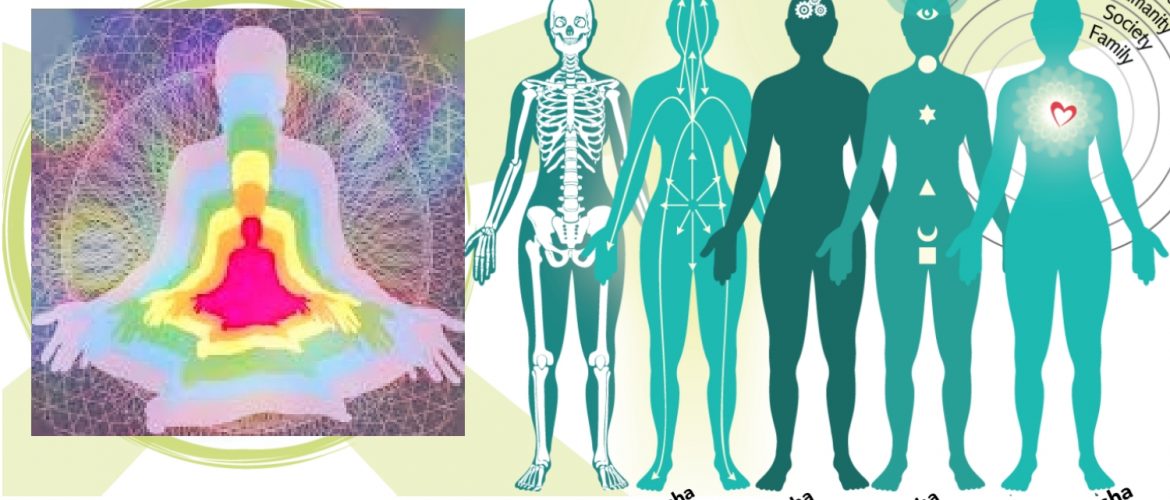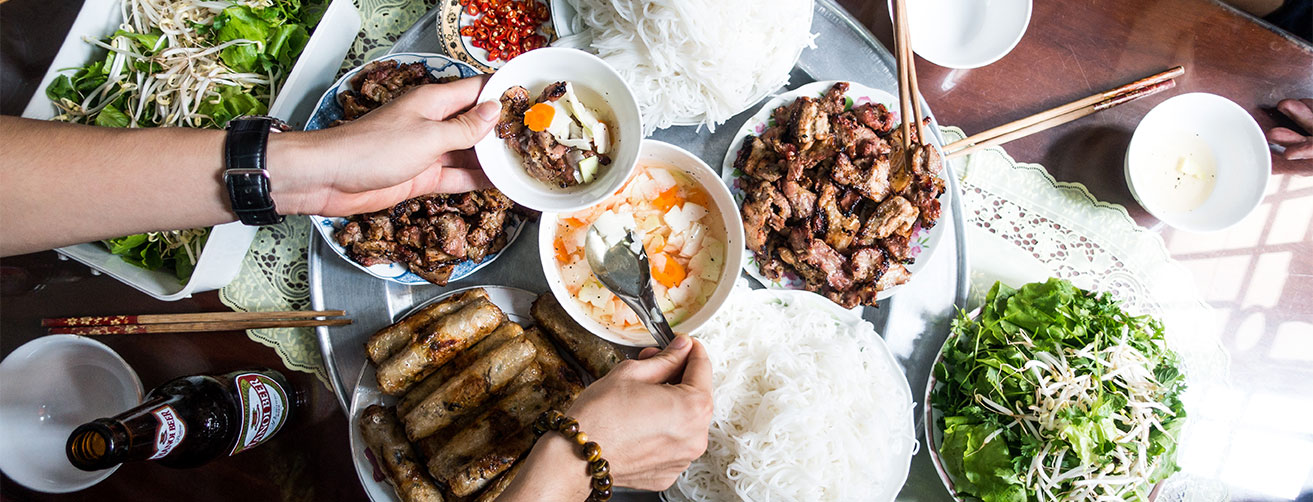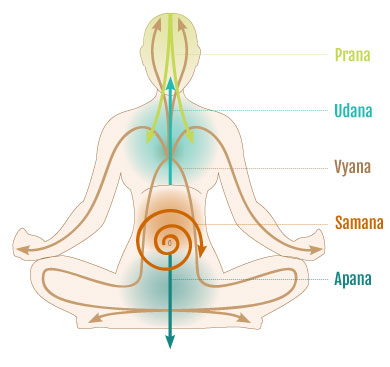The 5 Sheaths of Consciousness in Evolution: Who am I?
- April 10, 2019
- Posted by: admin
- Category: Featured Content,

By Nicole Yong Y.Y.
When I was a child, my mum enrolled me in a weekly piano class. Each student at the music center would strive to perfect their practical performance in order to pass and progress to the next level. I loved those lovely experiences as the songs that I learned gradually became more challenging yet interesting.
I started out as a beginner, progressing slowly and eventually, before I knew it, I had completed the highest grade – grade 8. Each certificate became a goal to achieve and it was a validation of hard work and progress. In my mind, this was a beautiful experience and something I could share to motivate students to achieve mastery. However, as I grew up and began my journey in working life, I began to wonder –
“From qualifications, designation, titles, assets attained, marriage, having children – are these the “real scales” for us to “level up”? Is this the evolution of our personal identity? …… What defines me? I found answers when I started studying the philosophy of yoga and practicing karma yoga.
Pancha Kosha - The Five Sheaths of Our Existence, from the Taittiriya Upanishad
I have summarized some of the beautiful messages derived from the Taittiriya Upanishad that have helped me understand who I am. For many of us, the word “evolution” brings us back to the Science class at secondary school where we learnt about change within the biological populations over millions of years for adaptation and survival. However, after having studied the Taittiriya Upanishad, I have come to realise that the meaning of evolution is much deeper than that. Humans have the ability to evolve through choices made or intentions set.
According to the Taittiriya Upanishad, the existence of the human being is connected to the pancha koshas. Pancha refers to five, kosha means sheaths, while maya means illusion. The five koshas are:
- Annamaya kosha – physical sheath
- Pranamaya kosha – physiological or energy sheath
- Manomaya kosha – psychological or the mind sheath
- Vijnanamaya kosha – wisdom sheath
- Anandamaya kosha – bliss sheath

1. Annamaya Kosha
The first sheath makes up the physical body. ‘Anna’ refers to food that nourishes the physical body. It is the transformation of food that is consumed. What is this body? It is skin, flesh blood, bone, muscles, tissues, and organs. Annamaya Kosha often links to the first thing we look at when we connect ourselves to the outer world.
On the other hand, maya prevents us from seeing the truth. In fact, Annamaya Kosha is the carrier for the other Koshas. The physical body undergoes change from birth – growth, decay, sickness and eventually death. We have no control over our biological processes as it is controlled by the laws of nature. However, we can delay our ageing process and reduce the chances of getting sick. We have a choice to allow evolution to continue at the level of the senses, mind, intellect, emotion or on the level of self.
Thus, we need to take good care of this physical body. Physical health manifests in several ways:
* free from aches and pain;
* feeling of lightness, free from lethargy;
* ability to withstand change;
* feeling a sense of stability and ease.
The physical body can be purified through the practices of Yoga Asanas (yoga poses), Shatkarma (yogic cleansing techniques) and Yogic diet (plant-based diet) which is sattvic in nature.
2. Pranamaya Kosha
The second sheath is Pranamaya. “Prana” refer to life force. Prana is a part of cosmic life. Prana is the energy behind the breath. It’s the life force within us and everything around us. This force holds together our body and our mind. When we raise our awareness through the practices of Yoga, we may be able to see the Pranamaya Kosha in the form of an Aura which surrounds the body. A person who is contented, energized, and in harmony with the self is likely to have high levels of prana, whereas those experiencing lethargy, low energy levels or dullness may have low prana.
The food that we eat can affect the pranayama kosha. For example, eating freshly cooked organic green vegetables will provide higher levels of prana than the ones sprayed with pesticides or overcooked. A natural view of a green garden and sunlight will provide more prana than a chaotic street.
The five vital forces in the body that make up the sheath of Pranamaya are Apana, Samana, Prana, Vyana and Udana. Besides, there are 72,000 nadis (the pathways) that move the prana in the human body. These nadis are interconnected with the chakras (the energy centers) in the human body. Each chakra has its own physiological function and affects the endocrine system. For example, the Vishuddhi chakra (throat chakra) balances the thyroid gland, and the Ajna Chakra located at the centre of the brain balances the pituitary and pineal glands. All these five vital forces affect the body’s physiological functioning. The Pranamaya Kosha is purified through the practice of Pranayama. Regular practice of yogic breathing, kapalbhati, bastrika, sheetali, and nadi shodhana allows the prana to penetrate deeply into every cell, recharging and rejuvenating the tissues and organs.

3. Manomaya Kosha
Another more subtle energy that is within the physical body but more mental in nature is known as Manomaya Kosha. Mano refers to the mind, but it includes not only the mind, but also thoughts, emotions, the senses, and the subconscious. Through the five senses of seeing, hearing, tasting, smelling and touching, the mind receives information and reacts accordingly based on Chitta (impressions, personal habit patterns) or Ahamkara (ego). It analyzes, records, understands, rationalizes, accepts, rejects and compares. During this time, positive and/or negative thoughts, feelings and emotion will arise.
The trained mind can influence the entire physical body system to function well and conserve energy. The trained mind increases concentration. The purified mind overcomes selfishness and ego, increases inner strength and brings inner peace. We can purify the Manomaya kosha through meditation, karma yoga (selfless service and charity work), bhakti yoga (prayer), knowledge (studying the scriptures), and Yama and Niyamas (the yogic moral ethics towards the society and self-discipline). The state of the manomaya kosha is affected by both what we eat (annamaya kosha) and our energy level (pranamaya kosha) too.


4. Vjanamaya Kosha
When the mind is further transcended, it reaches the wisdom sheath. Jnana refers to knowledge, awareness and inner perception. Here the buddhi (intellect) dominates our thinking, controls the Ahamhara (ego) and makes decision.
Vijnanamaya Kosha links the conscious mind, the individual mind and the universal mind. The universal knowledge comes to the conscious mind through Vijnanamaya Kosha. In other words, the mind sees the outlook of the object, but Vijnanamaya Kosha sees the object as a part of the universe.
We learn and we are able to stand back to witness our thoughts, emotions, and behaviors; then consciously make a right move. We realise our true nature.
We have greater potential to transform and become more stable, intuitive, truthful, vital, loving and connected to the Universe. When a person is deficient of the fourth sheath, he may not be in control of his life. He may constantly react without awareness. To purify the Vijnanamaya kosha, the intellect has to be purified and ego has to be surrendered. This can be achieved through the practice of Karma Yoga, self-introspection, jnana yoga via the study of Yoga Philosophy and regular practice of meditation.
4. Anandamaya Kosha
All the step-by-step yogic practices lead us to the bliss sheath – Anandamaya Kosha. Ananda refers to bliss. Whether in good times or bad, in good health or facing death, we remain steady.
This is a state of bliss beyond all kinds of attachment and cravings.
We transcend from the lower self to the highest. We are involved in all the works but unattached to any. We are just the observer. All the works presented to us are opportunities to serve with love. It becomes a source of our unconditional love, eternal happiness and harmony. When the mind is liberated, we understand what our “Real Identity” is. It is our divine being.
